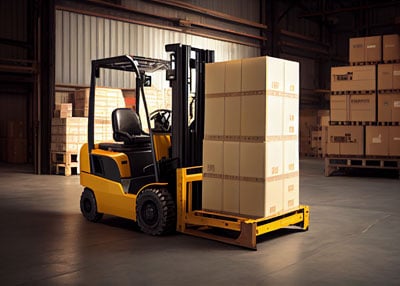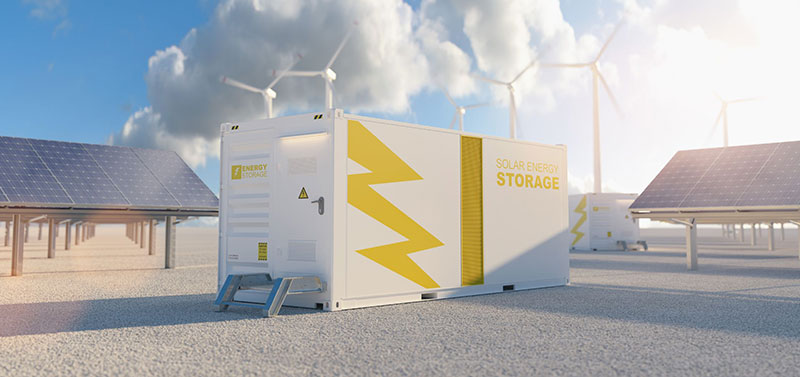A Tale of Two Off-Grid Homes:
Two homes have identical batteries, identical solar and wind systems, identical appliances and usage patterns, and the same owner: you.
But one home’s batteries died in the first year – and the other system will last another decade.
What made the difference?
One home was flying blind. A broken water pump drained battery capacity, and solar panels didn’t produce enough electricity. Nobody noticed what was happening for days. And by the time you called for help, it was too late to fix anything — your battery bank was dead. You were out of power for a week. And now you’re stuck with a costly battery replacement bill.
The other home followed the simple, product-agnostic strategies in this blog post. For instance, when battery capacity dips too low, or the building uses more power than expected, you get a text. And you can fix things right away.
When you’re living off-grid, your energy storage system is critical.
And today, you’ll discover easy, proven tactics that catch problems early – so you’ll get the most out of your off-grid energy storage system.
1) Monitor your loads
If you can’t see what’s happening, you can’t change them.
Seeing your electrical loads in real-time changes your usage patterns, reducing electrical usage. And it reveals vampire loads or large power draws that would otherwise go undetected for too long.
Since whole-home and appliance energy monitors show power usage in real-time, they provide far more information than a monthly power bill. And this allows people to reduce usage or spot constantly running or failing equipment earlier and easier. Many energy monitoring units even provide automated alerts and detailed data recording.
Your solar/wind installer or battery distributor can help you review your options for energy monitors.
2) Check with your system designer before adding new electrical devices
Often, batteries fail as a result of other changes in the electrical system. For instance, adding a new electrical load like a refrigerator or induction stovetop can deplete batteries’ stored energy. Combine greater power usage with days of lower solar and wind production, and batteries could discharge too deeply – leading to permanent damage.
In other scenarios, failing equipment like damaged well pumps might constantly run instead of cycling – depleting stored energy and potentially causing widespread damage to energy storage systems.
Usually, you can just email or call your off-grid system designer or battery rep to be sure your energy storage system is sized correctly to handle this increased demand.
3) Avoid deep discharging
Related to the tip above, operate batteries within the recommended discharge range. For off-grid applications, it’s best to size batteries for 50% Depth of Discharge (DoD) to ensure adequate energy reserves and avoid early equipment failure. The same recommendation applies whether you’re using recyclable lead-acid or AGM batteries or lithium-ion models.
4) Monitor your batteries
Without Battery Management Systems (BMS), battery users can only spot issues during routine maintenance or after there’s a problem.
With BMS, you can “see inside” battery banks to spot maintenance and other problems early when they’re easy to fix. This improves longevity, safety, performance, and dependability.
Here’s how it works: BMS uses special sensors and computers that show you operating parameters moment-by-moment – including cell and unit voltage and current, electrolyte levels, ambient and battery temperature, and more.
These systems typically include remote monitoring and alarms, early warning for system failure, low-voltage shutoff to optimize lifespan and minimize maintenance costs, and a State of Charge (SOC) indicator that displays how much usable energy is left.
All these parts of a BMS system help spot failing equipment before it kills your energy storage system. And that saves you time, money, and attention.
5) Perform routine maintenance
Routine maintenance is critical for spotting problems early and ensuring systems perform optimally.
And Crown Battery engineers have spent thousands of hours distilling maintenance best practices down into quick starter guides – which you can read in just a few minutes. Check out the “Safety First” here.
You can also look for telltale clues of equipment failure:
-
Dirt or other debris on battery terminals can lead to short-circuiting or increased corrosion. Follow your battery manufacturer's instructions or read the Safety First guide for cleaning recommendations.
-
Corrosion on battery terminals, a powdery substance, can be removed per manufacturer recommendations.
-
Loose battery connections? Tighten them in just a few seconds.
-
Check electrolyte levels and water batteries as needed.
-
Inspect cables, covers, and connectors to ensure they’re in good shape.
BONUS: Learn more about safe battery maintenance in Crown Battery's free “Safety.First” maintenance guide.









